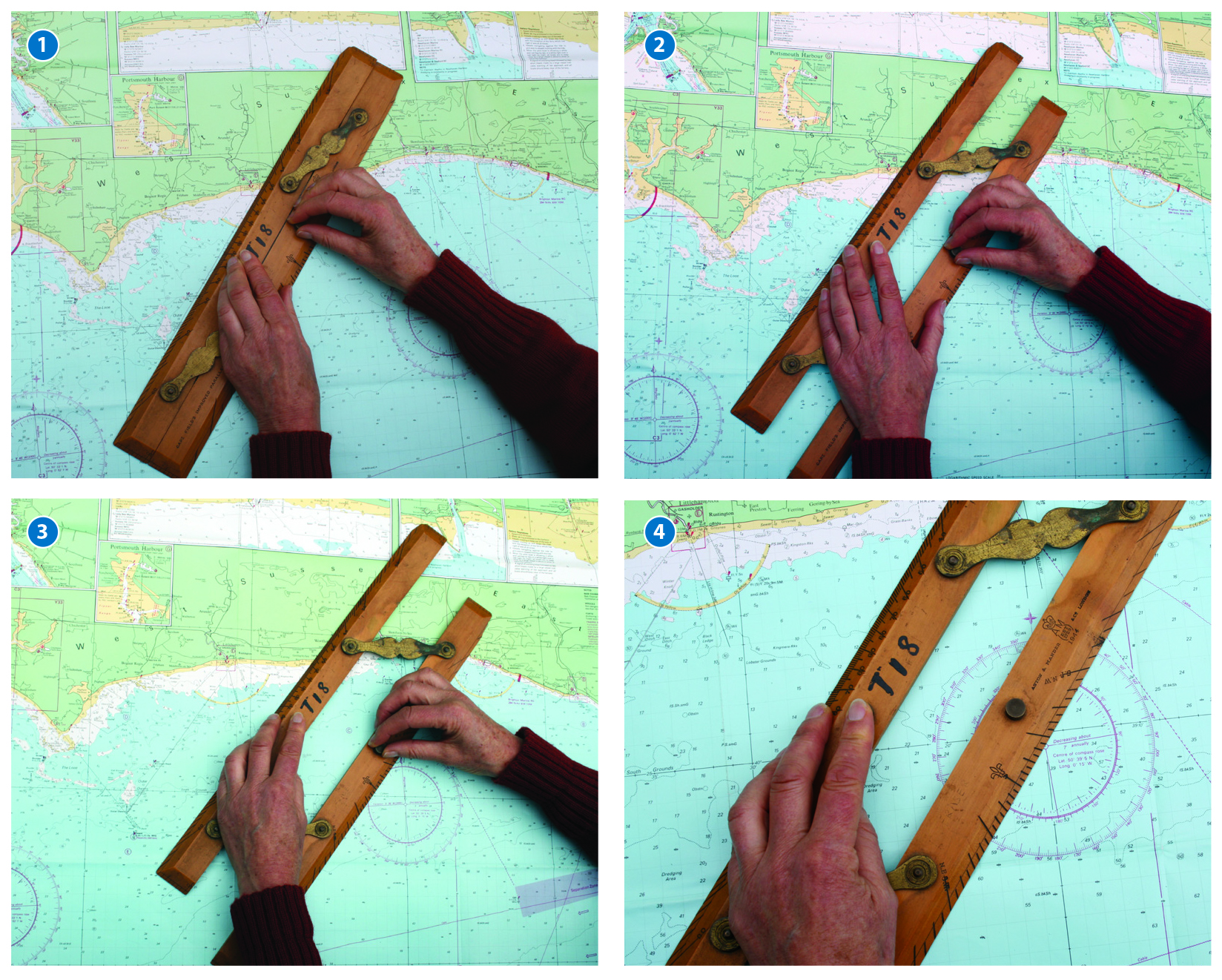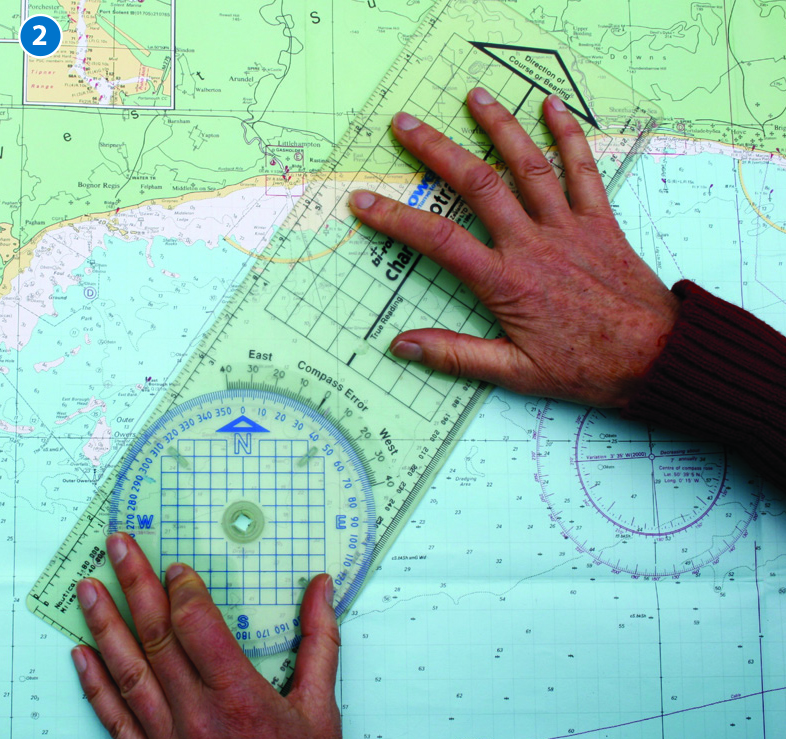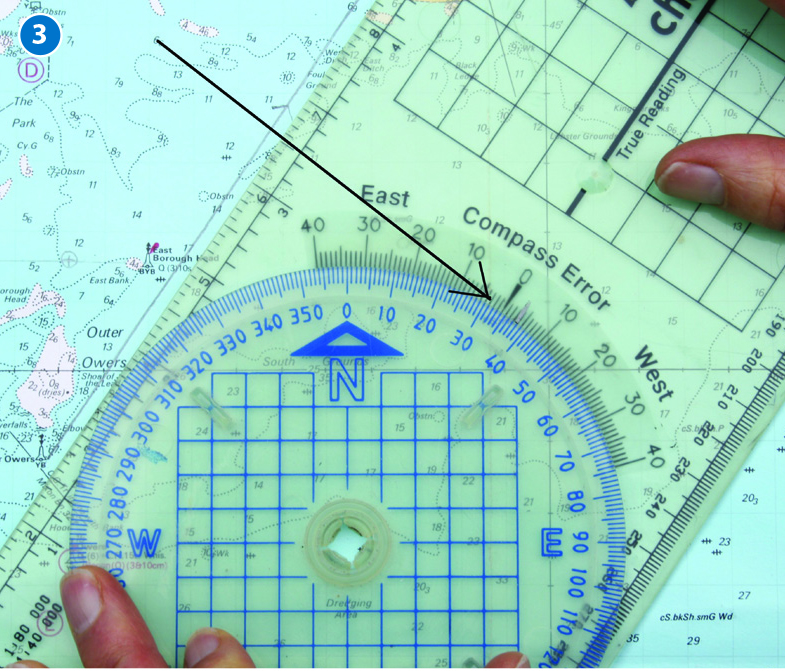Plotting Instruments With Tom Cunliffe
Book Extract
In order to determine the direction of the course line you have drawn on the chart, you must use an instrument to relate it to a convenient compass rose. The traditional method, still favoured in North America, is parallel rulers. These have practical drawbacks on small yacht chart tables which are solved in Europe by instruments that used to be call ‘plotters’, or ‘chart plotters’. It’s still correct to refer to them by this name, but because electronic chart plotters are now in common use and are a different thing altogether, I prefer to call them ‘chart protractors’.
Parallel rules
Very often there will not be a convenient compass rose beside the course line so if you are using parallel rules you must ‘walk’ them across the chart. On the chart table of a small yacht, well heeled in a seaway, this can be an infuriating process, which is why most of us living east of the Atlantic opt for one of the commercial protractors instead.

Using parallel rules to find the bearings of a course line. The rules are laid along the line (1) and the section furthest from the line swung open (2). This is then held down while the other section is moved to close the rules. This is repeated until one edge of the rule bisects the compass rose (3, 4).
The Chart Protractor
A modern chart protractor has its own compass rose which can be swivelled to any angle. The edges are parallel with a black line running down the middle of the tool’s long axis and through the middle of its compass rose. To use the instrument, the compass rose is orientated with the North-South, East-West grid lines you’ll find on any chart, and the main body is swing ‘underneath’ it to line up with the course or bearing being measured (1 and 2). The black line on the protractor body now cuts the rose at the angle you’re looking for (3).
Chart protractors usually carry a variation scale which can be marked up for the present location, thus enabling you to read off the course as either Magnetic or True – very helpful if you’re struggling to convert in a hurry by other means.
Because one well-known example of these instruments is called a ‘Breton Plotter’ the term has become generic. We’re going to use the term ‘chart protractor’ to differentiate from the electronic chart plotter, a very different tool, but one which has no other name.

To determine a course or bearing, a chart protractor is laid along the line you’ve plotted...

...and the grid on the central rose is aligned with that of the chart.

The bearing is read off against the mark indicated. Note that you can use Magnetic or True, once you’ve entered the variation onto the plotter scale.
© Not to be reproduced without written permission from Fernhurst Books Limited.
Inshore Navigation is written by Tom Cunliffe. Tom Cunliffe is Britain’s leading sailing writer. A worldwide authority on cruising instruction and an expert on traditional sailing craft, he learned his sextant skills during numerous ocean passages, many in simple boats without engines or electronics, voyaging from Brazil to Greenland and from the Caribbean to Russia. Tom’s nautical career has seen him serve as mate on a merchant ship, captain on gentleman’s yachts and skipper of racing craft. Tom has been a Yachtmaster Examiner since 1978. He wrote and presented the BBC TV series, ‘The Boats That Built Britain’ and the popular ‘Boatyard’ series.